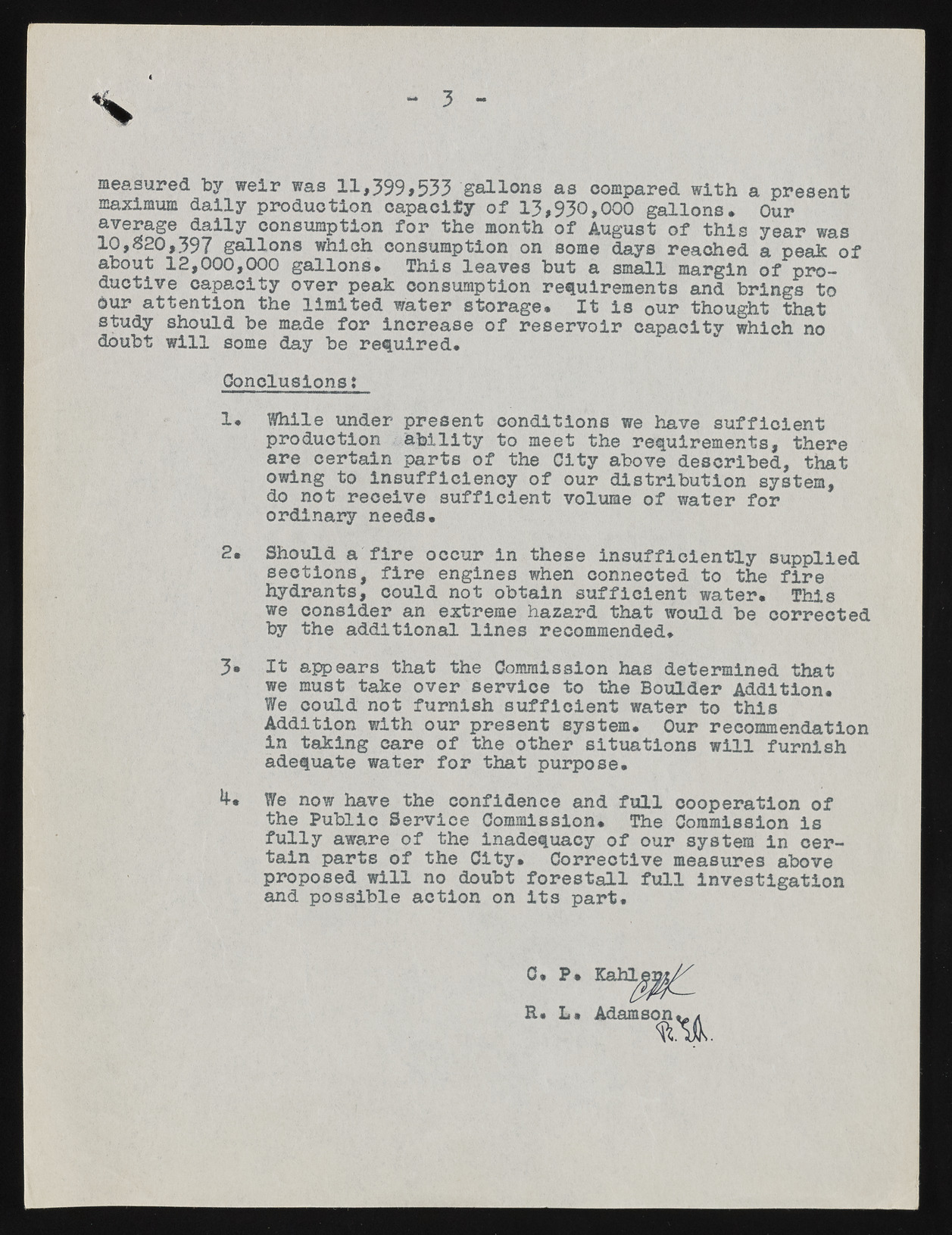Copyright & Fair-use Agreement
UNLV Special Collections provides copies of materials to facilitate private study, scholarship, or research. Material not in the public domain may be used according to fair use of copyrighted materials as defined by copyright law. Please cite us.
Please note that UNLV may not own the copyright to these materials and cannot provide permission to publish or distribute materials when UNLV is not the copyright holder. The user is solely responsible for determining the copyright status of materials and obtaining permission to use material from the copyright holder and for determining whether any permissions relating to any other rights are necessary for the intended use, and for obtaining all required permissions beyond that allowed by fair use.
Read more about our reproduction and use policy.
I agree.Information
Digital ID
Permalink
Details
More Info
Rights
Digital Provenance
Publisher
Transcription
3 measured by weir was 1 1 ,399*533 gallons as oompared with a present maximum daily production capacity of 13,930,000 gallons. Our average daily consumption for the month of August of this year was 10,320,397 gallons which consumption on some days reached a peak of about 12,000,000 gallons. This leaves but a small margin of productive capacity over peak consumption requirements and brings to bur attention the limited water storage. It is our thought that study should be made for increase of reservoir capacity which no doubt will some day be required. Conclusionst 1 . While under present conditions we have sufficient production ability to meet the requirements, there are certain parts of the City above described, that owing to insufficiency of our distribution system, do not receive sufficient volume of water for ordinary needs. 2. Should a fire occur in these insufficiently supplied sections, fire engines when connected to the fire hydrants, could not obtain sufficient water. This we consider an extreme hazard that would be corrected by the additional lines recommended* 3« It appears that the Commission has determined that we must take over service to the Boulder Addition. We could not furnish sufficient water to this Addition with our present system. Our recommendation in taking care of the other situations will furnish adequate water for that purpose. 4-. We now have the confidence and full cooperation of the Public Service Commission. The Commission is fully aware of the inadequacy of our system in certain parts of the City. Corrective measures above proposed will no doubt forestall full investigation and possible action on its part. 0. P. K a h l p ^ R. L. Adamson*./

